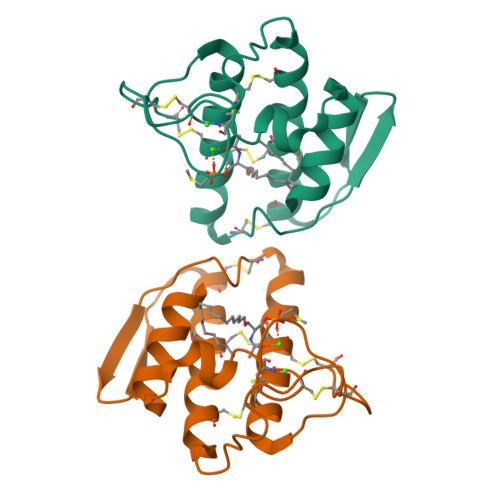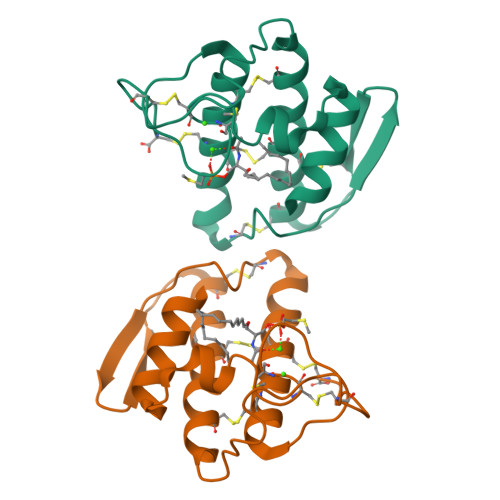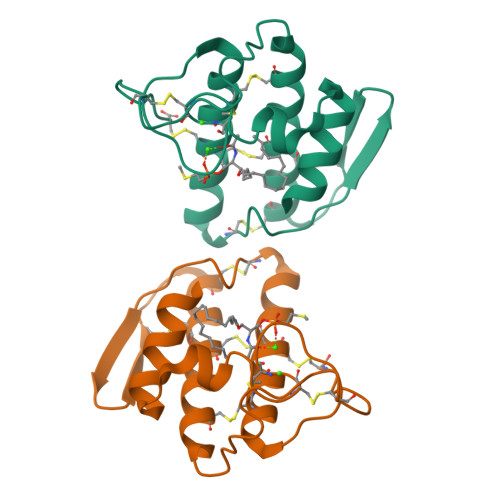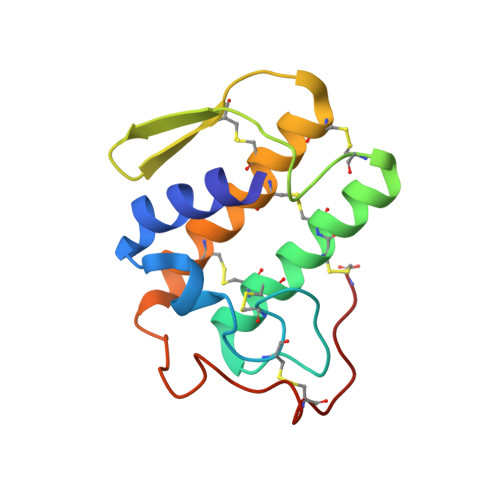A probe molecule composed of seventeen percent of total diffracting matter gives correct solutions in molecular replacement.
Oh, B.H.(1995) Acta Crystallogr D Biol Crystallogr 51: 140-144
- PubMed: 15299314
- DOI: https://doi.org/10.1107/S0907444994010024
- Primary Citation of Related Structures:
1AYP - PubMed Abstract:
It is often found in the crystallization of enzyme-inhibitor complexes that an inhibitor causes crystal packing which is different to that of native protein. This is the case for crystals of human non-pancreatic secreted phospholipase A(2) (124 residues) containing six molecules in the asymmetric unit when the protein is complexed with a potential acylamino analogue of a phospholid. The hexameric structure was determined by molecular replacement using the structure of monomeric native protein as a probe. As an extension to the experiment, it was tested whether a backbone polypeptide composed of 17% of a known monomeric structure could find its correct position on a target molecule in molecular replacement. A probe model composed of the backbone atoms of the N-terminal 77 residues of lysine-, arginine-, ornithine-binding protein (LAO, a total of 238 residues) liganded with lysine correctly finds its position on LAO liganded with histidine which crystallizes as a monomer in the asymmetric unit. The results indicate that as little as 17% of total diffracting matter can be used in molecular replacement to solve crystal structures or to obtain phase information which can be combined with phases obtained by the isomorphous-replacement method.
Organizational Affiliation:
Department of Macromolecular Science, SmithKline Beecham Pharmaceuticals, King of Prussia, PA 19406, USA.






















